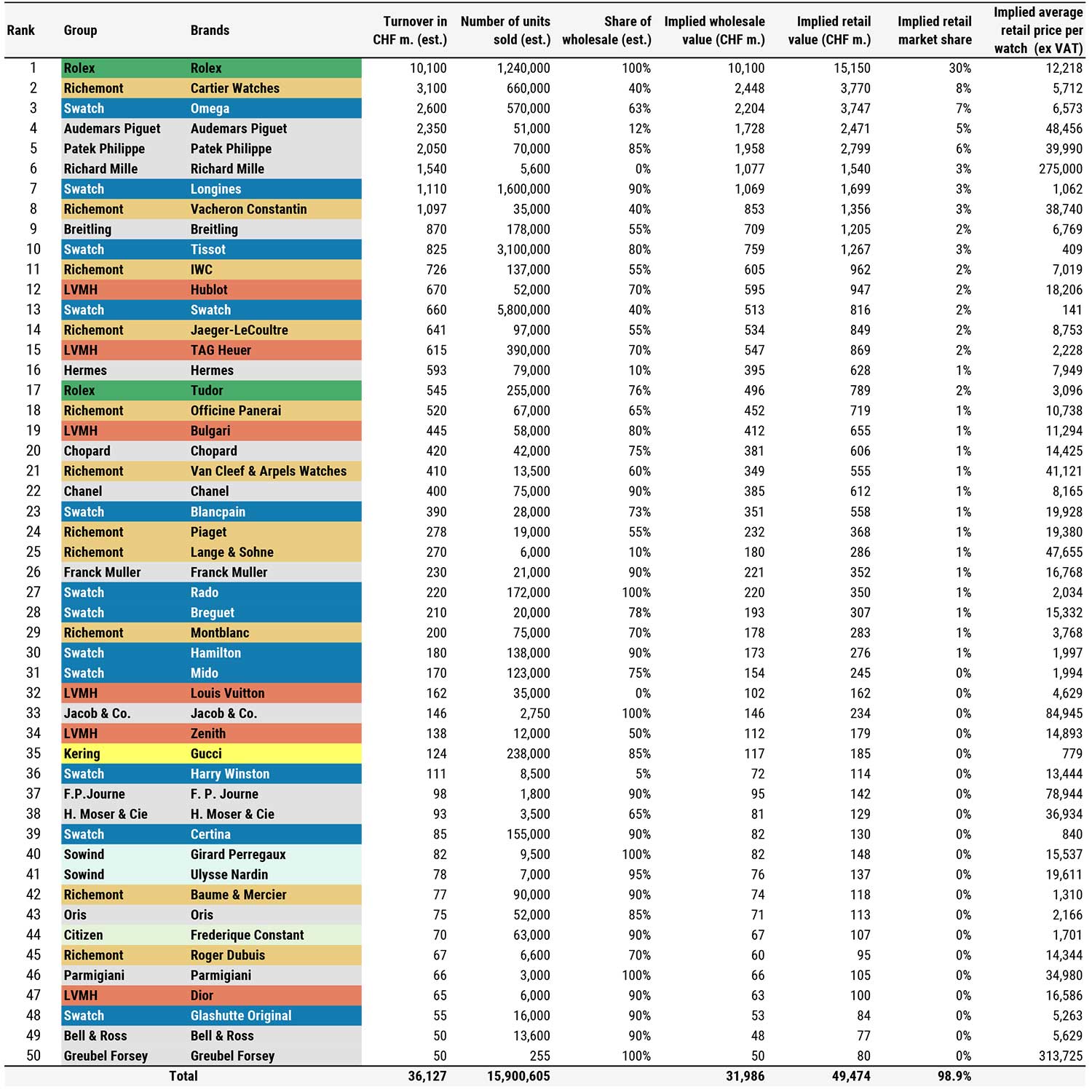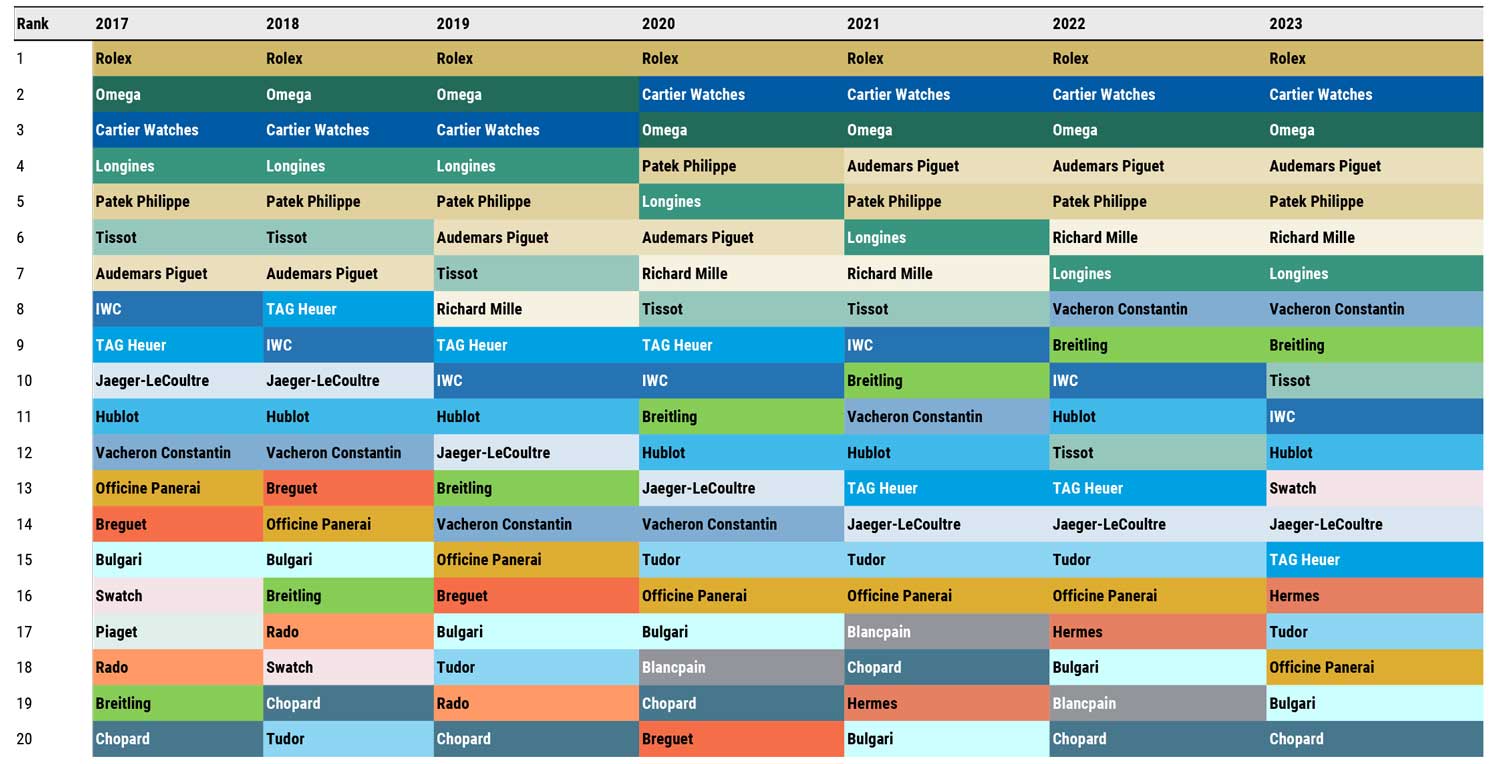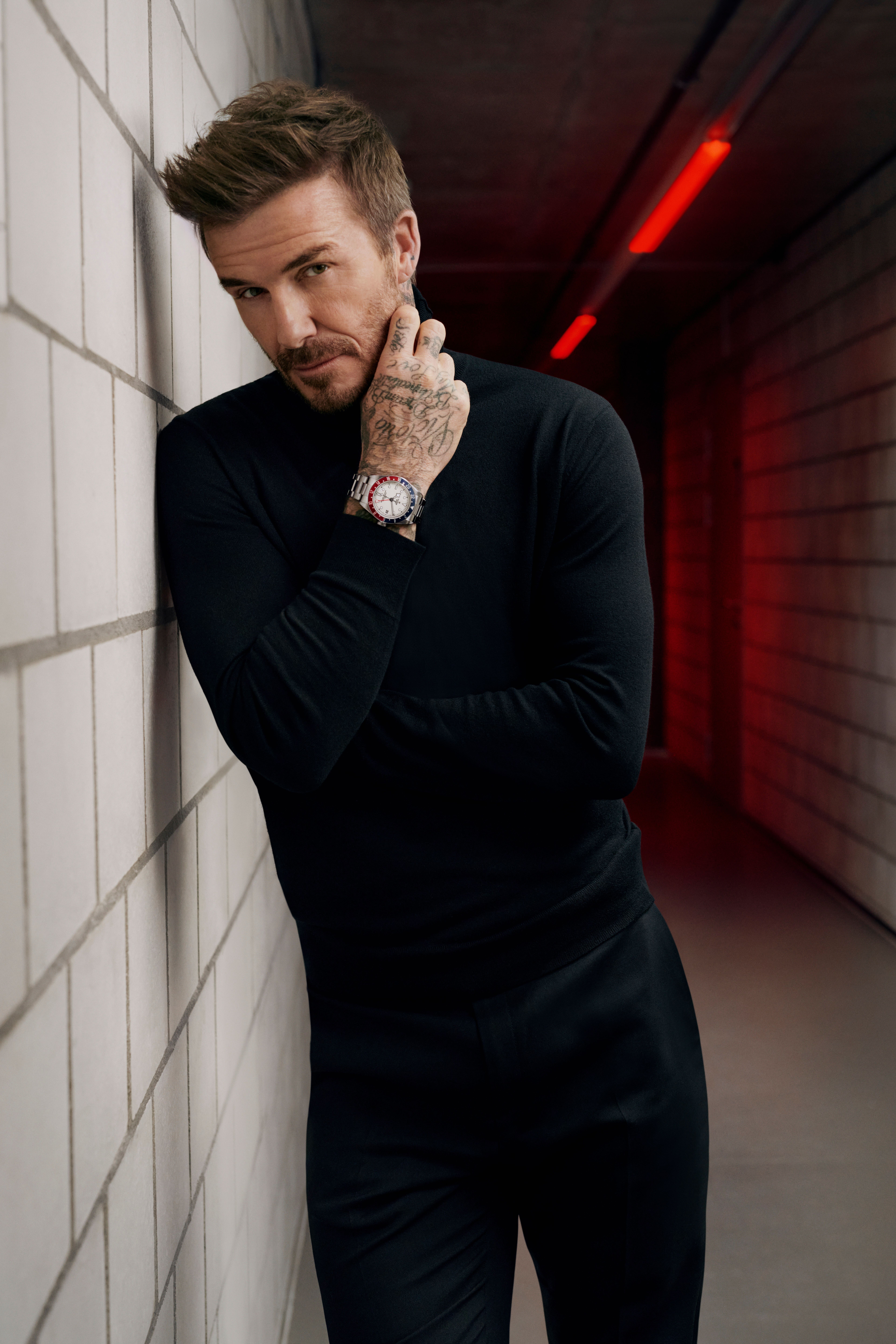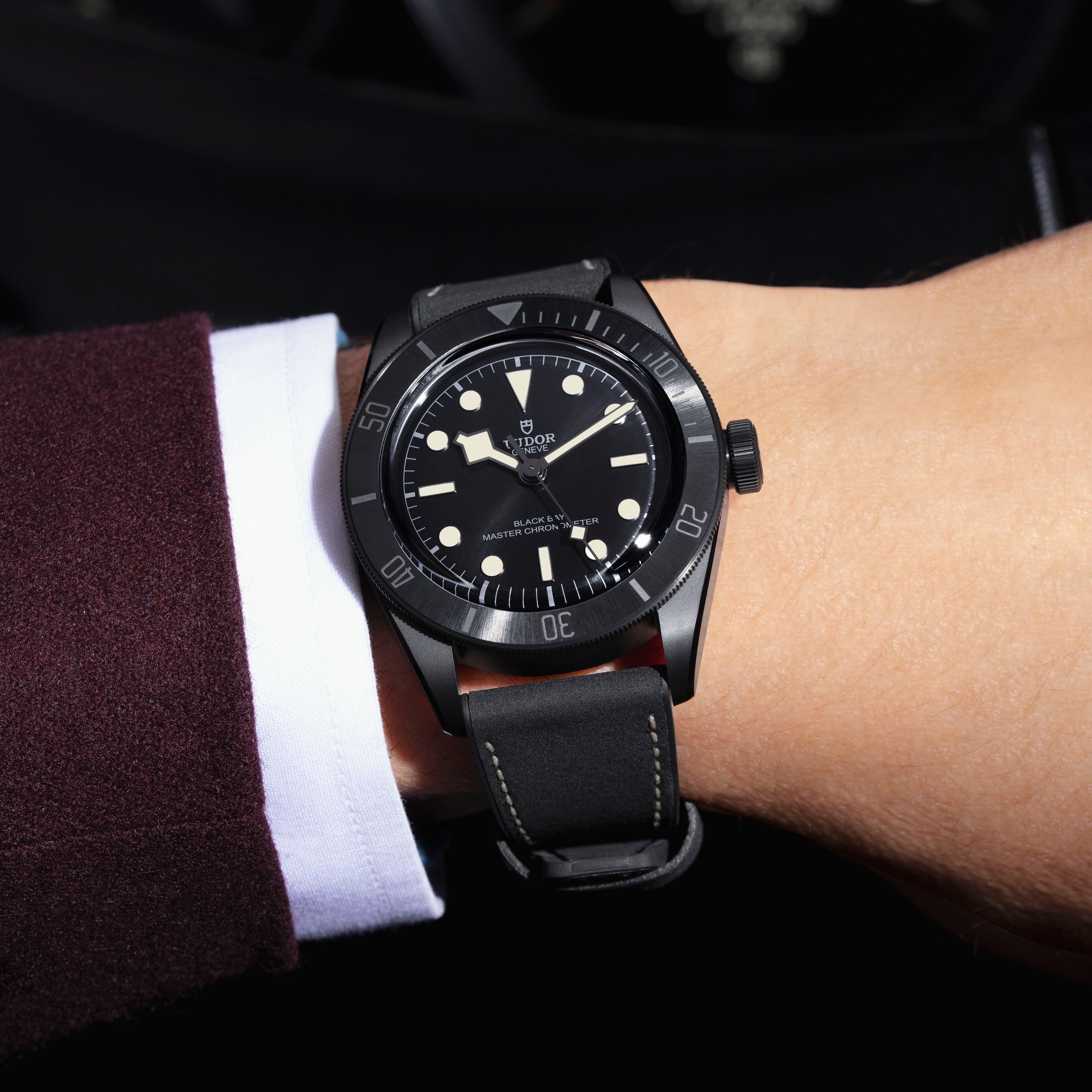The Tudor Turnaround: Doubling Sales & Stellar Growth Trajectory
Fueled by an insatiable demand for its wares, Tudor has rapidly expanded its global footprint, with its timepieces now gracing the showcases of over 1,700 retail locations across 100 countries, including more than 260 dedicated Tudor boutiques. This surge in distribution, coupled with the brand's soaring popularity, has propelled Tudor into the ranks of the 20 biggest Swiss watchmakers.
Sales have more than doubled since 2017, soaring well above the CHF 500 million ($566 million) threshold and accounting for approximately 5% of the Rolex Group's industry-leading CHF 10.6 billion revenue, according to analysts at Morgan Stanley and LuxeConsult. Remarkably, Tudor was hailed as "one of the fastest-growing brands" throughout the pandemic years, posting a staggering 23% compound annual growth rate from 2019 to 2023, with sales for the latter year estimated at around 625 million francs. Current production is pegged at approximately 300,000 watches annually with offerings that span a diverse range of price points, from around CHF 1,800 to just over CHF 7,000.

While still owned by the same charitable Swiss trust foundation as Rolex, the brand's increased autonomy is embodied by Pirson himself, who eschews the traditional trappings of a corner office. Instead, he holds court at the center of a vast boardroom table, surrounded by his colleagues – a powerful symbol of Tudor's egalitarian, team-oriented ethos.
Adhering to the brand's policy of discretion regarding sales and production metrics, Pirson is nonetheless forthcoming about Tudor's performance and strategic direction, underscoring its hard-won autonomy and the renewed confidence coursing through its ranks. He readily confirms that while sales growth has flattened amidst an industry-wide slowdown in 2023, the preceding half-decade witnessed a sustained period of double-digit growth year-over-year.
This prolonged upswing has necessitated a commensurate expansion of Tudor's workforce, including the recent inauguration of an state-of-the-art, automated manufacturing facility in the watchmaking hub of Le Locle. This new site, located approximately 100 kilometers (62 miles) north of Geneva in the Jura Mountains, has added 150 skilled workers to Tudor's ranks.

Nestled next door is the Kenissi SA watch movement factory, a 120-employee operation founded by Tudor itself, in which the brand owns an 80% stake (with fashion powerhouse Chanel holding the remaining 20%). In addition to supplying movements to esteemed marques like Breitling, Norqain, and TAG Heuer, Kenissi's output allows Tudor to lay claim to the coveted "in-house" designation for a selection of its calibers – a distinction traditionally reserved for far loftier, higher-priced brands.
Value proposition may be Tudor's greatest strength. Their Black Bay diver costs £2,800 (INR 296679 approximately) on a bracelet with an in-house movement - a bargain next to equivalent models from Omega (£4,170 or INR 441840 approximately) or Breitling (£5,310 or INR 562631 approximately). Despite sharing common movements these days, Breitling's chronographs can cost over £2,000 more than the Tudor equivalents for essentially the same watch.

As Tudor has steadfastly defended its value proposition, many of its rivals have veered in the opposite direction, progressively elevating their pricing in a bid to boost margins and chase the rarified air occupied by Rolex. Brands like Breitling, IWC Schaffhausen, Omega, and even the traditionally budget-focused TAG Heuer have all increased their average price points in recent years, fueling an industry-wide upward migration along the value chain.

This dynamic is reflected in the brands' respective iconography – while Rolex's crown logo is an internationally recognized symbol of success and status, Tudor's emblem, a battle-ready shield, casts the brand as Rolex's stalwart defender. As a Rolex executive once proclaimed, according to company archives, "The shield protects the crown."

Tudor has cannily tapped into watch enthusiasts' desires that even mighty Rolex cannot satisfy. While Rolex excels at progressive excellence, Tudor harks back to fondly remembered vintage aesthetics like riveted bracelet links, gilt dials, and domed crystals. Yet they seamlessly blend these heritage elements into watches that still feel fresh and contemporary. But nostalgia is only part of the appeal. Tudor also delivers true innovation like in-house movements with 70-hour power reserves and silicon hairsprings that resist magnetism. Even details like their unique snowflake hands serve a practical purpose for enhanced legibility.
In another bold stroke underlining its pioneering spirit, Tudor achieved a significant horological milestone in 2021 by producing its first watch bearing the coveted Master Chronometer certification from the Swiss Federal Institute of Metrology (Metas). This rigorous government-monitored testing regimen demands excellence across a battery of criteria, including water resistance, timing accuracy, power reserve performance, and the ability to withstand magnetic fields. Metas certification has long been closely associated with Omega and its premium-priced dive watch offerings.

"When Tudor adopted Metas chronometer certification for some of its models, it put the crosshairs on Omega," asserts Brendan Cunningham, a professor of economics and finance at Eastern Connecticut State University and author of "Selling the Crown: The Secret History of Marketing Rolex." This bold move further solidified Tudor's positioning as a true innovator within the industry.
While Rolex has cultivated an air of impenetrable mystique, seldom elaborating on its products or strategies, Tudor has embraced a more communicative approach. The brand actively participates in industry events where the Crown maintains a conspicuous absence, with Tudor models having won prestigious prizes for five consecutive years at the Grand Prix d'Horlogerie de Genève, an annual celebration honoring the year's finest watchmaking achievements.
Tudor’s bold, convention-defying attitude extends to its marketing initiatives and ambassadorial partnerships as the brand has aligned itself with a diverse array of celebrity talent, including pop icon Lady Gaga, golfing great Tiger Woods, and global soccer superstar David Beckham, who was frequently spotted wearing Tudor timepieces throughout his hit 2023 Netflix docuseries. Once relegated to sponsoring niche, rough-and-tumble pursuits like rugby, ice hockey, cycling, and surfing, Tudor has elevated its sporting affiliations. The brand now lends its name to a Red Bull-backed racing yacht campaign and has secured sponsorship within the pinnacle of global motorsports – Formula 1.

Yet, for all its newfound independence and boundary-pushing bravado, Tudor still retains tangible operational ties to Rolex. One of the last remaining logistical links, according to Pirson, is the sharing of export channels out of Geneva, with Tudor benefiting from Rolex's extensive network of trucks, trains, ships, and aircraft to reduce costs and minimize its environmental footprint. "That's one of the reasons it's still so close with the Crown headquarters – at least for the time being," Pirson reveals, before adding with a hint of steely determination, "We really live autonomously."

Since its much-anticipated return to the American market in 2013, Tudor has cemented its status as a commanding presence within the luxury sports watch realm. This hard-earned renaissance can be attributed to the brand's masterful ability to iterate upon its rich design heritage, crafting an array of fresh, innovative offerings that pay homage to the past while boldly forging into the future.
From the hugely successful Black Bay line to the pioneering Pelagos and the Heritage Chrono, Tudor's storied legacy has served as the fertile soil from which its contemporary masterpieces have blossomed. As the brand continues to chart its own daring course, one truth has become abundantly clear: the once-underestimated underdog has definitively claimed its place as the leader of the pack.
No articles found





